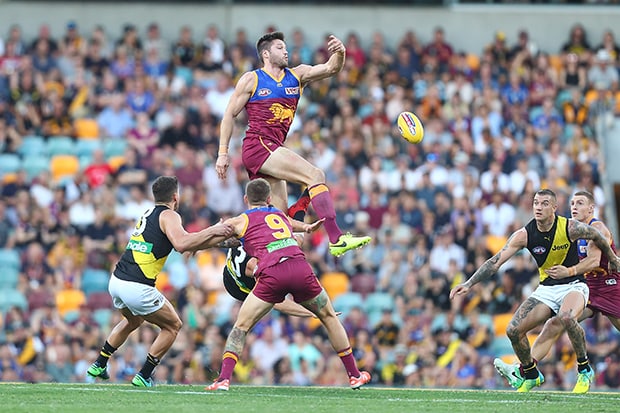Never before has so much been expected of your No.1 ruckman.
Extensive statistical analysis on the ruck revolution began in 2002 and several key categories peaked or troughed this past season.
The best big men now absorb 76 percent of the ruck duties and play 83 percent of game time.
Those figures have steeply risen from 61 and 71 percent, respectively, a decade ago, when Dean Cox and Brendon Lade were the knights of the centre circle.
AFL clubs selected more than one specialist ruckman just 57 times in the 2017 season, a startling drop from the recorded high of 267 only nine years ago.
Interestingly, the number of ruckmen drafted has not been impacted in the past five years, hovering between nine and 11 in that period.
That could mean increased cases like Jake Spencer, Majak Daw and Dawson Simpson, none of whom has played more than 38 games despite all being AFL-listed for at least eight seasons.
Ruck guru Darren Flanigan, who played 138 matches for Geelong from 1981 to 1992, works with some of the country's most talented ruckmen and has adapted to the role's new expectations.
"I reckon I changed (my coaching) 10 years ago, from where I'd just teach
"Now I talk more about the physicality of the role and the athleticism required to play the role, but also your ability to impact the game when you're not in the ruck.
"The days of the standalone ruckman who just rucks and goes to the bench are too hard to manipulate and manage these days."
No ruckman spent more time on the ground in any position this year than Stefan Martin (88.5 percent).
Martin stood out in clearances and marks, collecting an average of 35 hit-outs and four marks per game.
Stefan Martin wins the hit-out during the round 4 against the Tigers at The Gabba.
What enthuses Flanigan is there is room for ruckmen to boast different strengths.
"I watch ruckmen with great interest – and maybe I'm over-observant – but I think it's a great position to play," Flanigan said.
"Everyone is so different with their methodology of playing in the position, and you have to back your skills against the opposition's skills.
"You play on each other, but you can play off each other and it's almost like a game of chess … I just think they're amazing athletes."
How the role of the ruckman has evolved
YEAR | % TIME NO.1 RUCKMAN IS IN RUCK | % TIME NO.1 RUCKMAN PLAYS IN ANY POSITION | % OF TEAM'S HIT-OUTS NO.1 RUCKMAN WINS |
2017 | 76 | 83 | 81 |
2012 | 71 | 85 | 70 |
2007 | 61 | 71 | 59 |



